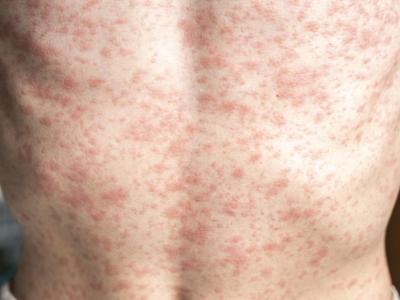Israeli program sees CRE rates cut in half during 7-year period
Israeli long-term care facilities (LTCFs) saw a 50% reduction in carbapenem-resistant Enterobacteriaceae (CRE) during a 7-year national intervention program, according to a study today in Clinical Infectious Diseases.
The Israeli National Center for Infection Control (NCIC) led the program, which included implementation of population-tailored contact precautions, and early detection of carriers. NCIC started the program and enhanced surveillance in 2008, 2 years after the introduction of CRE into Israeli hospitals.
The program targeted Israel's 15 post-acute care hospitals (PACHs), 15 skilled nursing facilities (SNFs), and 300 nursing homes (NHs). Within 3 years of launching the program CRE acquisition rates dropped steadily, reaching 50% of baseline values by 2015. The incidence of CRE acquisition declined between 2009 and 2015 in all facility types, as expressed by an incidence rate ratio (IRR) of less than 1 per year (PACHs, 0.90; SNFs, 0.87; NHs, 0.93).
The number of these LTCFs reporting 5 or more CRE acquisitions annually (defined by the authors as an outbreak) decreased from 35 to 11 from 2012 to 2015, as well.
"We demonstrated that a comprehensive, multimodal, nationwide strategy effort focusing on improved infection control, early carrier detection and contact isolation succeeded in reducing CRE incidence in LTCFs by over 50%, and almost eliminating CRE prevalence 8 years into implementation," the authors concluded.
Jul 9 Clin Infect Dis study
Study: Many neonatal infections have no known cause
Late last week The Lancet published the findings of the Aetiology of Neonatal Infection in South Asia (ANISA) study, which surveyed neonatal possible serious bacterial infections (pSBIs) among pregnant women in India, Bangladesh, and Pakistan, and noted a possible antibiotic stewardship connection.
The prospective study included 6,022 pSBI episodes among 63,114 babies, identified by community health care workers from 2011 to 2014 between days 0 through 59 post-birth. The workers found that 28% of episodes (16% bacterial and 12% viral) could be attributed to a known pathogen. Mean incidence of bacterial infections was 13.2 (95% credible interval [CrI], 11.2-15.6) per 1,000 livebirths and of viral infections was 10.1 (9.4-11.6) per 1,000 livebirths.
According to the study, among fatal infections, causes were attributed in 46% of pSBI episodes, among which 92% were bacterial. The vast majority (83%) of 102 blood culture isolates were susceptible to penicillin, ampicillin, gentamicin, or a combination of these drugs.
Respiratory syncytial virus (RSV) was the most commonly identified pathogen, represented in 5.4 per 1,000 livebirths.
The lack of a cause in a high proportion of cases suggests that pSBI episodes might not be due to bacterial infection, and subsequently, antibiotics may be overused in this patient population.
In an accompanying commentary, Anna Seale, MD, and Ramesh Agarwal, PhD, write, "Of 6,022 pSBI episodes, only 16% had attributed bacterial causes, and 102 (2%) of 4859 tested blood samples had clinically significant pathogens isolated by culture." Seal and Argawal said this information should shape antibiotic use among this patient population.
Jul 6 Lancet study
Jul 6 Lancet commentary












